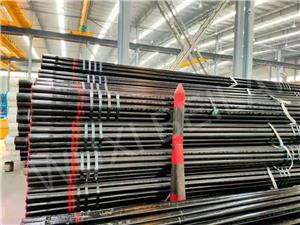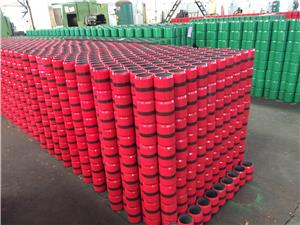How to test the strength of seamless steel pipe?
Test preparation
1. Sample selection
First, a representative sample of seamless steel pipe needs to be selected. The selection of samples should be based on factors such as material composition, heat treatment process, production batch, etc., to ensure the universal applicability of test results. At the same time, the sample should have no obvious appearance defects, such as cracks, dents, rust, etc., to ensure the accuracy of the test.
2. Prepare the device
Before the test, the necessary test equipment should be prepared, mainly including tensile testing machine, vernier caliper, micrometer, distance meter, etc. Tensile testing machine is the core equipment for testing the strength of seamless steel pipes, and it is necessary to ensure that its accuracy and stability meet the test requirements. In addition, it is necessary to prepare the corresponding fixture and auxiliary tools in order to correctly install the seamless steel pipe sample on the test machine.
Test method
1. Appearance inspection
Before the formal tensile test, the seamless steel pipe sample should be inspected for appearance. Through visual inspection or with the aid of a magnifying glass and other tools, carefully observe the surface of the sample for cracks, dents, rust and other defects. At the same time, using vernier calipers, micrometers and other tools to measure the sample's outer diameter, wall thickness and other dimensional parameters to ensure that it meets the standard requirements.
2. Tensile test
Tensile test is the main method to test the strength of seamless steel pipe. The specific steps are as follows:
Sample processing: According to the test requirements, the seamless steel pipe sample is processed into a standard tensile sample. The parameters such as the length and diameter of the sample should be processed in strict accordance with the standard provisions, and the marker distance should be marked on the sample for the subsequent measurement of elongation.
Install the specimen: install the processed tensile specimen on the fixture of the tensile testing machine. During installation, it is necessary to ensure that the sample is firmly installed and aligned with the axis of the testing machine to avoid test errors caused by sample deviation.
Start the test: Start the tensile testing machine and gradually increase the tensile force at a constant rate. During the test, the tensile force and the elongation of the sample are recorded in real time. When the specimen breaks, the testing machine will automatically stop and record the maximum tensile force.
Data processing: According to the recorded tensile force and elongation data, calculate the tensile strength, yield strength, elongation and other mechanical properties of seamless steel pipe. Tensile strength refers to the maximum tensile force borne by the specimen before fracture divided by the original cross-sectional area of the specimen. The yield strength is the maximum tensile force of the specimen before the obvious plastic deformation occurs. Elongation refers to the ratio of the elongation of the specimen after fracture to the original length.
3. Data processing and result analysis
Data processing is an indispensable part of the testing process. Through the processing and analysis of tensile test data, the strength performance index of seamless steel pipe can be obtained. In the process of data processing, the following points should be noted:
Ensure the accuracy and reliability of data and avoid the impact of human error on test results.
Conduct reasonable statistics and analysis of the data in order to draw conclusions with general applicability.
The test results are compared with the standard requirements to evaluate whether the strength properties of seamless steel pipes meet the requirements.




